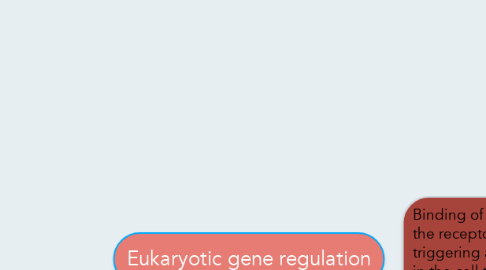Eukaryotic gene regulation
by bianca capozzi


1. Binding of the growth factor causes the receptor to change shape, triggering a series of chemical events in the cell that activate proteins called transcription factors.
1.1. Chromatin accessibility. The structure of chromatin (DNA and its organizing proteins) can be regulated. More open or “relaxed” chromatin makes a gene more available for transcription.
1.1.1. Transcription. Transcription is a key regulatory point for many genes. Sets of transcription factor proteins bind to specific DNA sequences in or near a gene and promote or repress its transcription into an RNA.
1.1.1.1. RNA processing. Splicing, capping, and addition of a poly-A tail to an RNA molecule can be regulated, and so can exit from the nucleus. Different mRNAs may be made from the same pre-mRNA by alternative splicing.
1.1.1.1.1. RNA stability. The lifetime of an mRNA molecule in the cytosol affects how many proteins can be made from it. Small regulatory RNAs called miRNAs can bind to target mRNAs and cause them to be chopped up.
